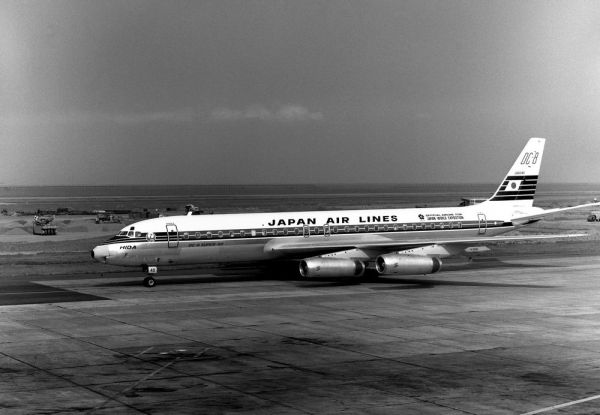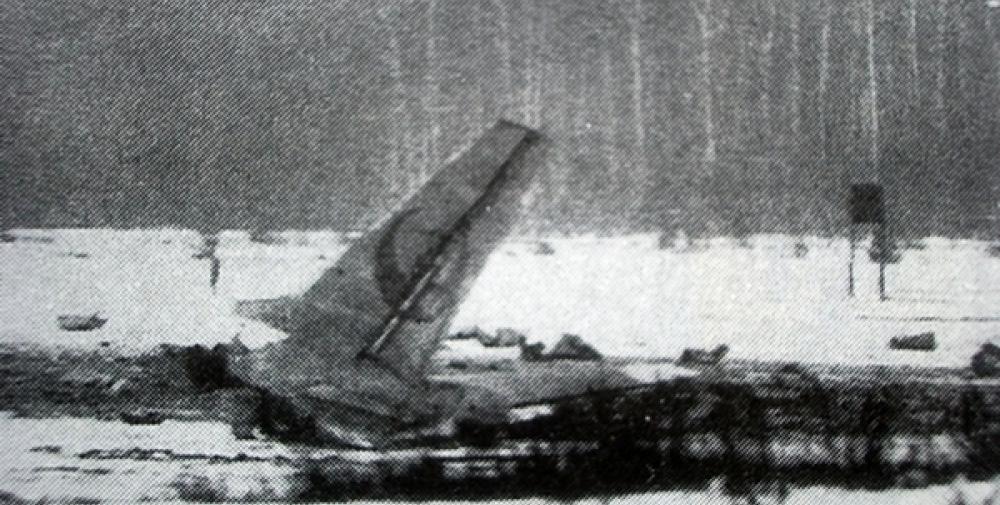Date & Time:
Nov 28, 1972 at 1951 LT
Type of aircraft:
Douglas DC-8
Registration:
JA8040
Flight Phase:
Takeoff (climb)
Flight Type:
Scheduled Revenue Flight
Survivors:
Yes
Schedule:
Copenhagen - Moscow - Tokyo
MSN:
46057
YOM:
1969
Flight number:
JL446
Country:
Russia
Region:
Asia
Crew on board:
14
Crew fatalities:
9
Pax on board:
62
Pax fatalities:
52
Other fatalities:
0
Total fatalities:
61
Circumstances:
A McDonnell Douglas DC-8-62 passenger plane, JA8040, was destroyed when it crashed on takeoff from Moscow's -Sheremetyevo Airport (SVO), Russia. Five of the 14 crew members and ten of the 62 passengers survived the accident. JAL flight JL446 was a scheduled international flight from Copenhagen (CPH), Denmark to Tokyo-Haneda (HND), Japan with an en route stop in Moscow. The flight to Moscow was uneventful and the airplane landed at 18:17. After servicing of the aircraft startup and taxi clearance was received at 19:38. JL446 was cleared for takeoff from runway 25 at 19:49. On takeoff the DC-8 climbed to 100 m with a supercritical angle of attack and lost height abruptly. It hit the ground and burst into flames.
Probable cause:
The cause of the disaster to aircraft DC-8-62 JA-8040 resided in the fact that during take-off and following attainment of the safety speed V2, the crew put the aircraft into a supercritical angle of attack which resulted in loss of speed and altitude. The aircraft's assumption of supercritical angles of attack was the consequence of one of the following circumstances:
- Inadvertent extension of the spoilers in flight, leading to a fall in the maximum value of the lift ratio and an increase in drag;
- Loss of control of the aircraft by the crew in conditions associated with malfunctioning of the No. 1 or No. 2 engine consequent upon possible ice formation on the engine intake at a time when the de-icing system was switched off.
The anomalies in the functioning of the engines observed by the crew and other witnesses may have arisen after the aircraft had assumed a supercritical angle of attack with the spoilers extended.
- Inadvertent extension of the spoilers in flight, leading to a fall in the maximum value of the lift ratio and an increase in drag;
- Loss of control of the aircraft by the crew in conditions associated with malfunctioning of the No. 1 or No. 2 engine consequent upon possible ice formation on the engine intake at a time when the de-icing system was switched off.
The anomalies in the functioning of the engines observed by the crew and other witnesses may have arisen after the aircraft had assumed a supercritical angle of attack with the spoilers extended.
Final Report:
JA8040.pdf2.94 MB




